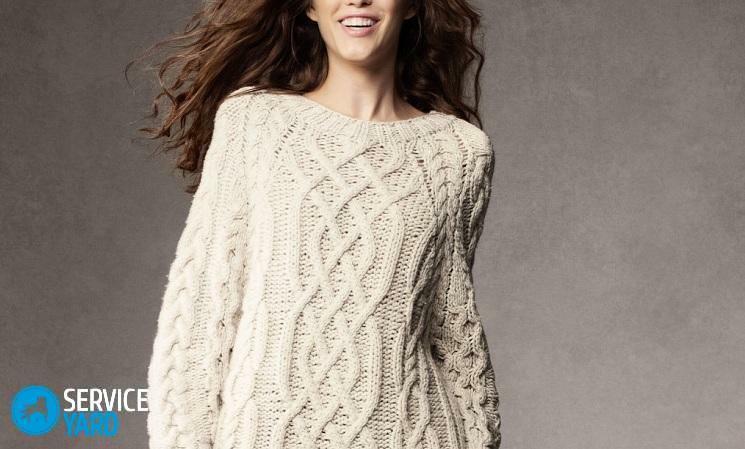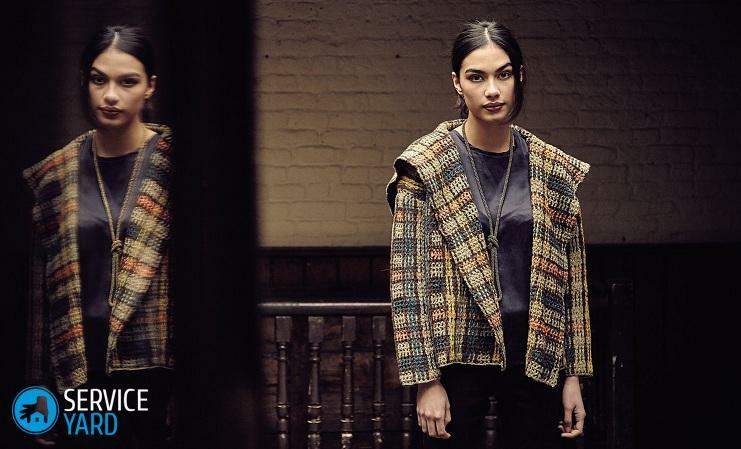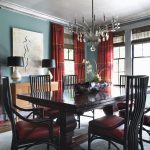
- Kinds of yarn
- Popular knitting techniques
- Master class: knitting a man's sweater in Jacquard technique
Year after year all women are haunted by the idea of how to be the most beautiful and fashionable. For today in shops there is a weight of any clothes, different styles and colors. But despite the variety, all things are almost similar to each other, sewn as if by a pattern. There is a solution to this problem - designer knitted things. Clothing knitted from yarn with knitting needles or crochet has always been a success among women and men. And at the moment the range of yarn has become more diverse, so you can connect everything you want - from socks and ending with a cardigan. In addition, you can create your own unique thing that you are unlikely to meet anywhere else. The main thing is to learn how to knit and master the techniques of such needlework. You should familiarize yourself with the types of yarn for knitting. With all this, and understand in this article.
to content ↑Types of yarn
Yarn is created from yarns, and yarn from fibers. Fibers can be of both natural and artificial origin. Before the fiber turns into a thread, it passes through a mass of different treatments - from cleaning to twisting. Yarn can be made from fibers of one kind or from impurities, depending on what will be knit from it. For example, in some types of yarn impurities are added to improve elasticity.
Let's consider some examples of natural fibers:
- Wool - this kind of material is made of sheep's wool. It retains heat for a long period of time. Often it is used for knitting scarves, socks and hats.
- Cashmere - a thin down of a high-mountain goat cashmere breed. The material is very refined and gentle, so its cost is quite high. Each fiber of such material is thinner than a human hair. That is why when you come into contact with it, you get the impression of lightness and tenderness.
- Angora - the fluff of Angora rabbits. The coat is very soft, fluffy and warm. With proper care, the product from angorka can last for more than one year. Wash sweaters from such a coat is recommended only by chemical means with extreme caution.
- Silk - is extracted from the cocoons of silkworms. The length of one silk thread is approximately 1000 m. Due to the fact that this raw material is not so easy to extract, it is very expensive in the market. In most cases, natural silk threads are combined with other types of yarn.
- Cotton is a vegetable fiber. The material has good hygienic properties and thermal conductivity. Very strong raw materials and quite affordable. However, cotton yarn is often subjected to severe crushing and adverse effects of light.

Let's consider some examples of synthetic fibers:
- Microfiber - consists of fibers of polyamide and other polymers. The material received such a name because of its small thickness. Such fibers are used in the manufacture of fabric and knitwear.
- Acrylic is made from ethylene. Such fibers are very tough, unlike other artificial yarns. It is very easy to paint in bright colors. In addition, it is not susceptible to insect attack( moth).
- Nylon is referred to as lightweight yet durable fibers. It is used to create knitwear. Has very high elasticity. From it very often knit socks.
- Metallic - this type of raw material is used as an ornament. If you knit a sweatshirt or scarf only from this raw material, then as a result of wearing it will be very uncomfortable. Therefore, this yarn is combined with other types of raw materials.
Important! There is a mixture of yarn, that is, combine several types of raw materials to achieve a better result at the end of knitting of a particular product. In simple terms, a synthetic yarn is added to natural yarn to impart shine or elasticity.
From such a wide range of yarns you can choose any of them. The main thing - take into account your own preferences and desires.
to content ↑Popular knitting techniques by
Experts analyzed a lot of knitting techniques for designer things with knitting needles and highlighted a few of the most popular ways. Let's consider them in more detail:
- Patterns Spits and Arans - sweaters, pullovers and tunics, made in this technique, are now at the peak of popularity. They adorn women's silhouettes with their volume and originality.
- Large knitting - the products knit very quickly. Many needlewomen create sweaters and tunics in a matter of days. Products are dense and very neat.
- Jacquard knitting - colored ornaments and drawings are implied. Such a pattern can be made on the entire product or just below. Colors are selected in accordance with the main shade. Everything depends on the preferences of the needlewoman.
- Perforated technique is a new trend in knitting. Suitable for creating spring and summer products. Usually in this technique knit vests and jackets, as well as various T-shirts. Holes in products create very beautiful geometric shapes and stripes.
- Application - drawings are embroidered already on the ready pullover or sweater. Often, for embroidery threads of floss or other synthetic smooth threads are used.
- Fur - ready-made crocheted overcoats are sewn in pieces of artificial fur. It looks very original and unusual. Sew on fur garters manually, with a needle and thread in the color of the product.
You can choose any mating technique you like. But for a start, it's better to choose the easiest one to get a little hand on.
to the contents ↑Master class: knitting a Jacquard sweater
To connect this model, you will need:
- Sheep wool( yarn) - 50 g.
- Wine red thread - 150 g.
- White threads- 100 g.
- Melange anthracite yarn - 750 g.
- Spokes - 4,5 and 5;
- Circular knitting needles 40 cm long
Jacquard pattern
Knit by the pattern in jacquard technique, following these tips:
- In the purlins we knit with the corresponding colors of the previous row.
- Each red diamond is knit from a separate coil.
- When changing the color in each row of the thread, we cross on the wrong side to avoid the formation of unnecessary holes.
- We embroider white rhombs with stitch stitch according to the scheme.
- Loops as described in the instructions.
- In height, constantly repeat the 1-60th series.

Decorative adjustments:
- Right edge: we sew the two eyelets so that they are together with the front side.
- Left edge: we knit two loops with a slant to the left( we remove one loop, as in the case of face knitting, then pull the loop off through the edge knitting).
Backrest:
- On the spokes we type anthracite thread 102 of the loop for the strip, beginning with the back of the row.
- We knit 4 cm( 11 rows of elastic band).
- Then we use knitting needles No. 5 according to the scheme, while between the edge loops we make a rapport for 50 loops.
- After 106 rows from the strip, close on both sides for the bevels, then in each second row for 1 loop.
- After 58 rows from the beginning of the bevels, close the remaining loops.
Before
We knit like a backrest, but for the neck we close the middle 12 loops:
- At the height of 46 rows from the beginning of the bevels, we finish the left side.
- On the inner edge for further rounding in each second row, close the 1 x 3 loop, 1 x 2 loop and 3 x 1 loop.
- After 12 rows from the beginning of the neck, close the remaining 2 loops.
- The other side ends the same way.
Sleeves:
- For spokes with anthracite thread, we collect 62 hinges for each hose, beginning with the back of the weave 11 rows of elastic band.
- We knit the knitting needles according to the scheme, while distributing the loops as follows: we make edge 30 loops, and then 30 more loops.
- For bevels on both sides in the 9th row from the bar, add 1 loop and then in each 8th row for 1 more. After 106 rows from the strip, we make bevels, as described for the backrest.
Assembling the product:
- We perform embroidery stitch along the white lines in the diagram.
- Next, we perform the seams of the sides and sleeves.
- For the collar over the neck of the back, we collect 30 loops on the circular knitting needles, and 40 loops along the neck, 14 loops along the upper edges of the sleeves.
- Loops are closed in a circle and we knit 72 round rows with an elastic band.
- Then loops are freely closed.
So we get a very nice pullover size of 50-52.
We have given you only 1 example of a unique knitted thing, you can start with simple products. And having honed their skills in different patterns and patterns, combine them, creating original products according to their ideas.

